Abstract
The effects of reward and cost token procedures on the social and academic behavior of two groups of elementary special-education students were assessed using a reversal design. Behavioral observations of three target subjects in each group revealed that both procedures were about equally effective in reducing rule violations and off-task behavior. Records kept on the daily arithmetic performance of all subjects showed that output doubled in both groups during the token phases, although accuracy remained unchanged. When students were allowed to choose either contingency, no pattern of preference was established. Small differences were found in teacher behavior: the reward procedure led to an increase in approval comments but cost procedures produced no changes in teacher behavior.
Full text
PDF

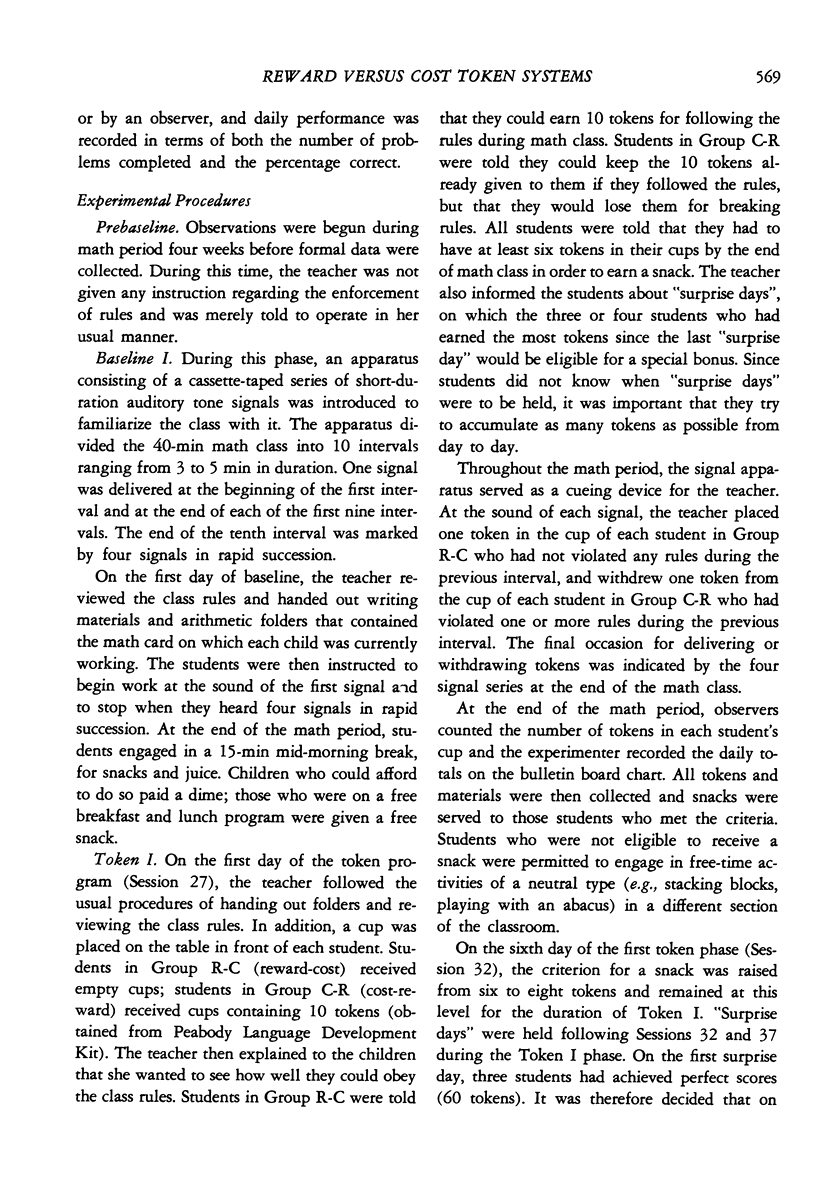
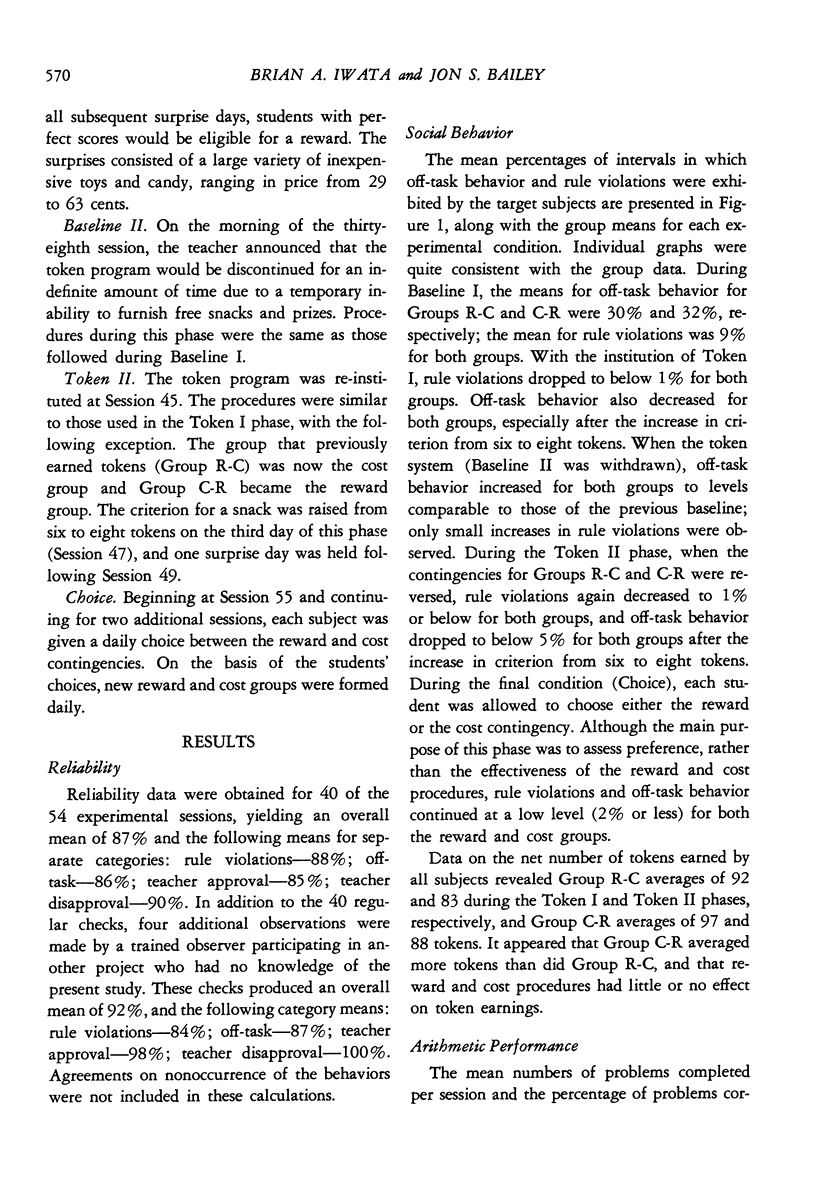
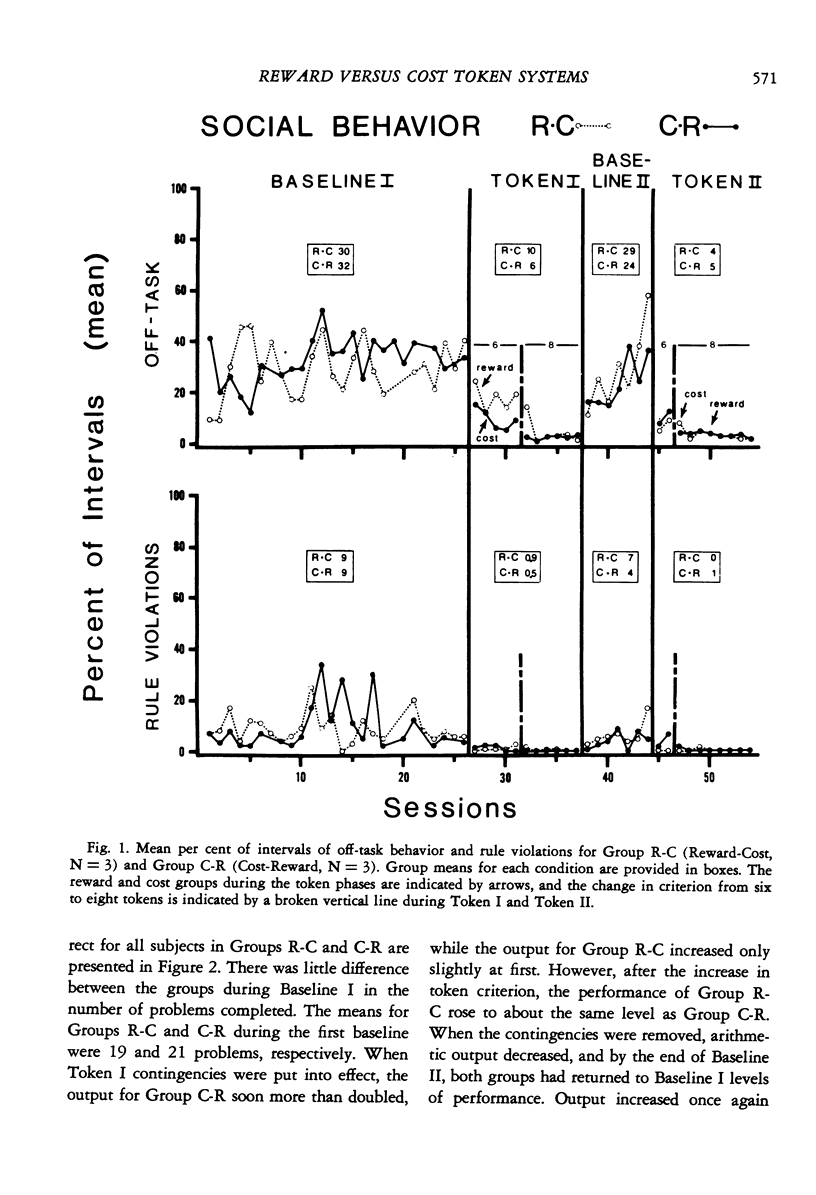
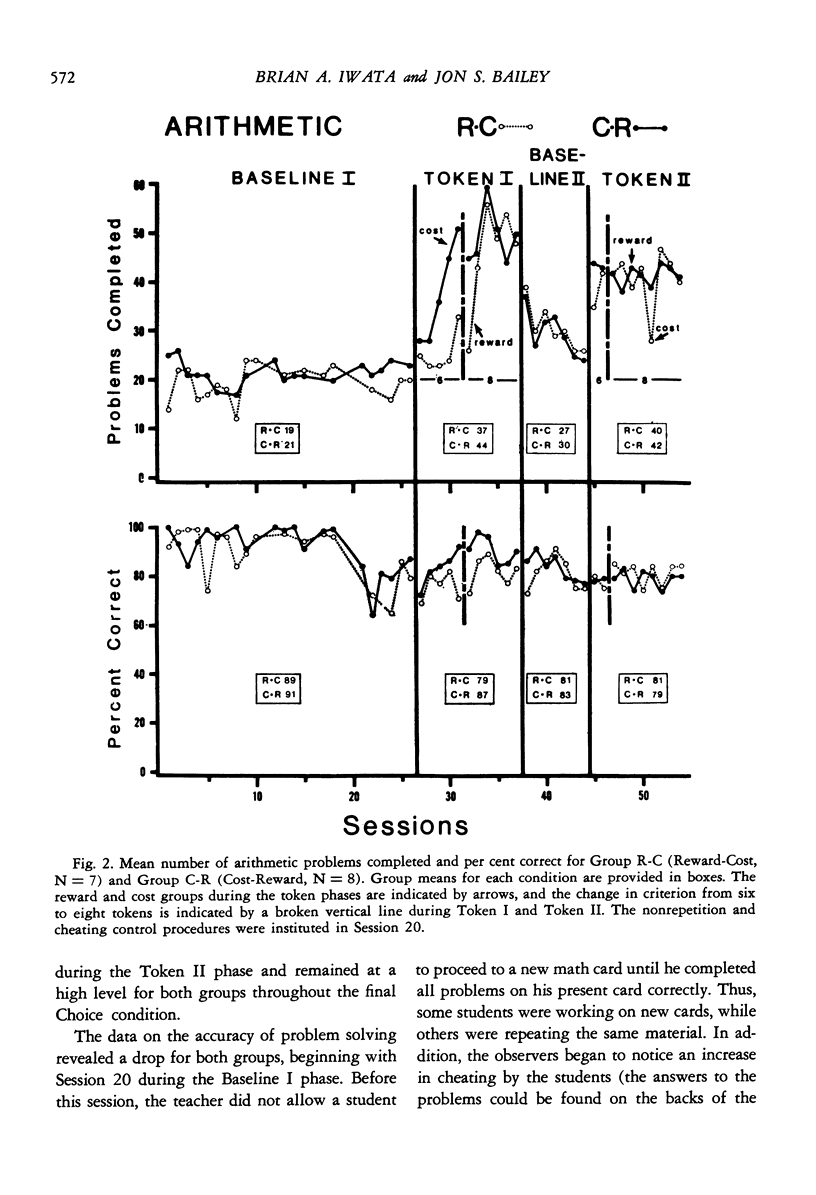

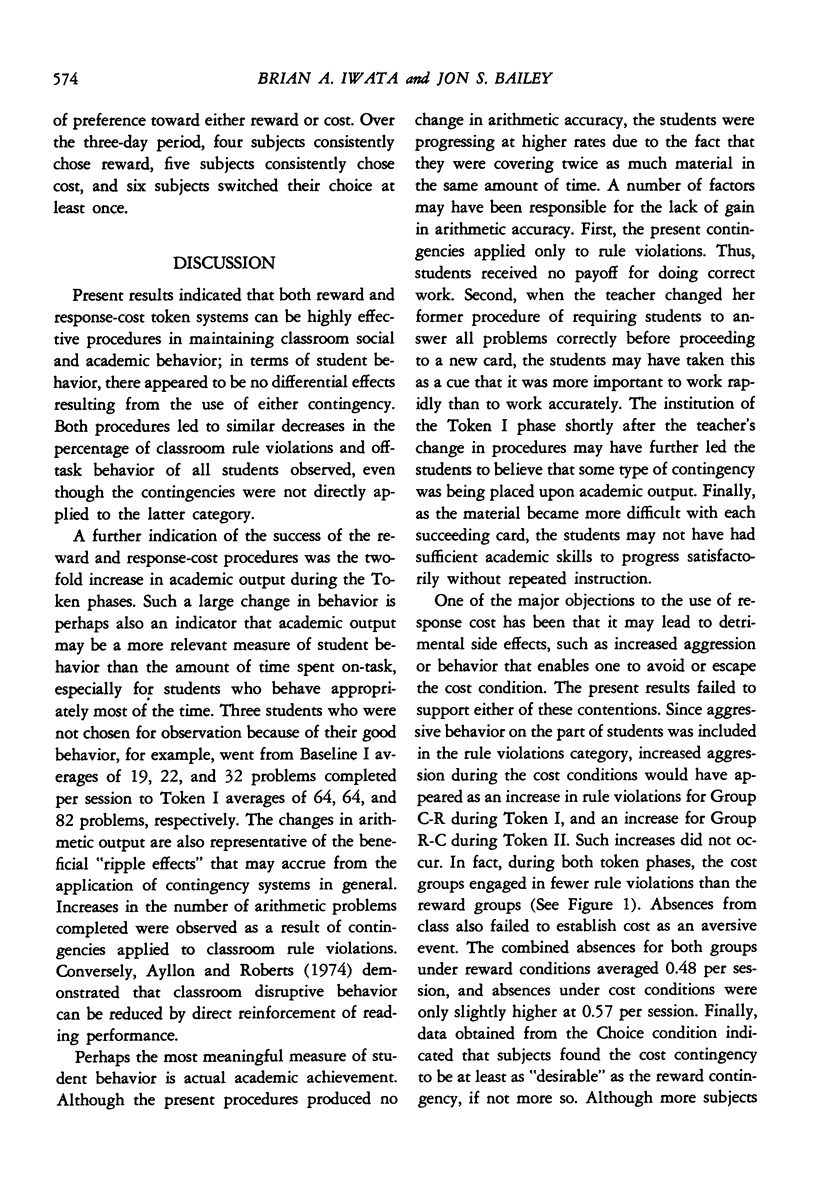

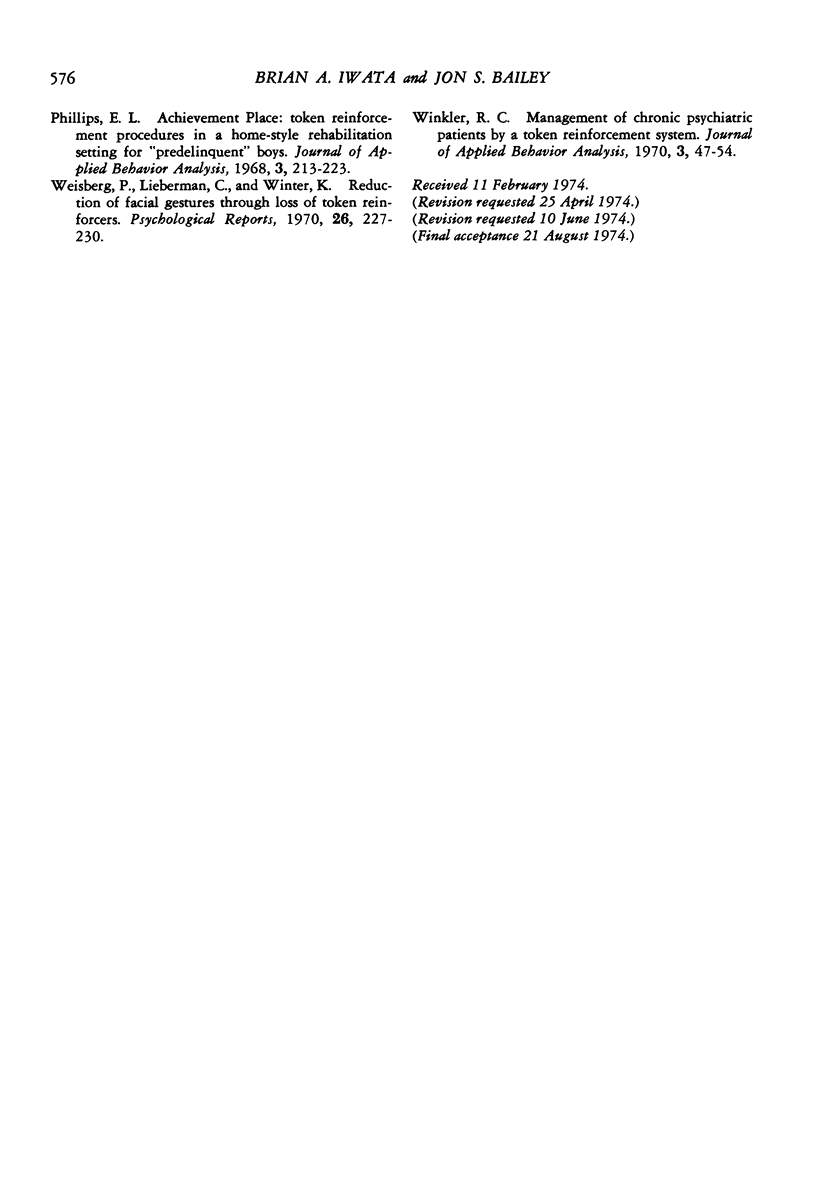
Selected References
These references are in PubMed. This may not be the complete list of references from this article.
- Ayllon T., Roberts M. D. Eliminating discipline problems by strengthening academic performance. J Appl Behav Anal. 1974 Spring;7(1):71–76. doi: 10.1901/jaba.1974.7-71. [DOI] [PMC free article] [PubMed] [Google Scholar]
- Bailey J. S., Wolf M. M., Phillips E. L. Home-based reinforcement and the modification of pre-delinquents' classroom behavior. J Appl Behav Anal. 1970 Fall;3(3):223–233. doi: 10.1901/jaba.1970.3-223. [DOI] [PMC free article] [PubMed] [Google Scholar]
- Broden M., Hall R. V., Dunlap A., Clark R. Effects of teacher attention and a token reinforcement system in a junior high school special education class. Except Child. 1970 Jan;36(5):341–349. [PubMed] [Google Scholar]
- Kaufman K. F., O'leary K. D. Reward, cost, and self-evaluation procedures for disruptive adolescents in a psychiatric hospital school. J Appl Behav Anal. 1972 Fall;5(3):293–309. doi: 10.1901/jaba.1972.5-293. [DOI] [PMC free article] [PubMed] [Google Scholar]
- McLaughlin T., Malaby J. Reducing and measuring inappropriate verbalizations in a token classroom. J Appl Behav Anal. 1972 Fall;5(3):329–333. doi: 10.1901/jaba.1972.5-329. [DOI] [PMC free article] [PubMed] [Google Scholar]
- Paul G. L. Chronic mental patient: current status--future directions. Psychol Bull. 1969 Feb;71(2):81–94. doi: 10.1037/h0027065. [DOI] [PubMed] [Google Scholar]
- Phillips E. L. Achievement Place: token reinforcement procedures in a home-style rehabilitation setting for "pre-delinquent" boys. J Appl Behav Anal. 1968 Fall;1(3):213–223. doi: 10.1901/jaba.1968.1-213. [DOI] [PMC free article] [PubMed] [Google Scholar]
- Weisberg P., Lieberman C., Winter K. Reduction of facial gestures through loss of token reinforcers. Psychol Rep. 1970 Feb;26(1):227–230. doi: 10.2466/pr0.1970.26.1.227. [DOI] [PubMed] [Google Scholar]
- Winkler R. C. Management of chronic psychiatric patients by a token reinforcement system. J Appl Behav Anal. 1970 Spring;3(1):47–55. doi: 10.1901/jaba.1970.3-47. [DOI] [PMC free article] [PubMed] [Google Scholar]


